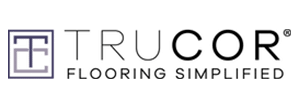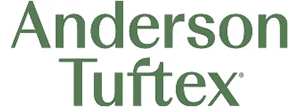How to Remove Dirt from Hardwood Floor Grooves for a Deep Clean

Cleaning dirt from the grooves of hardwood floorboards requires care, technique, and the right materials to protect the natural beauty of wooden floors. In kitchens and other high-traffic areas, dust and debris often settle into the seams, making regular maintenance essential. Professional cleaning routines focus on gentle tools and specially formulated hardwood floor cleaners to avoid damaging the wood while effectively removing grime.
Microfiber mops and soft-bristled brushes are ideal for lifting dirt without scratching the surface. Working in small, circular motions allows the cleaner to reach deeper into the grooves, loosening packed-in debris. Rubber-tipped tools and vacuum attachments help dislodge stubborn particles from between floorboards without scuffing or gouging the finish. This method is especially important in commercial hardwood floor settings, where consistent appearance and durability are essential.
Regular attention to floor grooves not only keeps wooden floors looking clean but also extends their life by reducing wear from trapped grit and buildup. Whether for homes or businesses, a smart approach to floor care ensures long-term performance and aesthetic appeal.
Understanding Why Dirt Settles in Floor Grooves
Over time, even the most well-maintained natural wood floors develop deeply embedded dirt in the grooves, a result of everyday life and unavoidable physical forces. Gravity pulls fine dust and airborne particles downward, and these particles settle into the narrow gaps of hardwood planks, whether those gaps are due to natural wood grain, manufacturing patterns, or seasonal expansion and contraction. These seemingly minor indentations, often just 0.5 to 2 millimeters deep, become long-term reservoirs for grime.
On original floors, the grooves act like magnets for mineral dust, plant debris, and other microscopic matter that drifts in from both indoor and outdoor sources. Once in contact with the wooden surface, these particles adhere firmly due to surface-level bonding forces in the range of 10 to 50 microNewtons. This bond becomes stronger over time, making routine sweeping and mopping less effective as the particles compact and harden in place.
This hidden buildup contributes to a subtle but visible darkening of floor seams. Even when the surface appears clean, these deeply rooted particles dull the appearance and compromise the health of the floor underneath. Without proper care, the wooden floor’s fate is one of slow deterioration masked by surface shine. Restoring such floors often requires professional hardwood floor cleaning, where specialized tools and knowledge are used to lift out dirt without harming the finish. Regular deep cleaning preserves not just the look of wooden floors, but their integrity for years to come.
Choosing the Right Tools for Deep Cleaning
Cleaning hardwood floors correctly starts with using tools that are designed to match both the floor’s material and the specific needs of your space. When caring for hardwood floors, it’s not just about removing surface dirt; it’s about protecting the integrity of the wood while addressing the grooves, edges, and corners where grime tends to collect. The most effective cleaning solutions for wooden floors are those with pH levels between 6.8 and 7.2. This range ensures that the wood’s natural finish remains intact while still providing enough cleaning strength to lift dust and dirt without damage.
To reach deep into floor seams and around obstacles, specialized tools are essential. Microfiber mops with adjustable handles make it easier to clean under furniture or reach across wide areas without straining. Soft brushes with synthetic bristles, typically between 0.12 and 0.15 mm thick, loosen packed-in debris without scratching delicate finishes. Vacuum attachments built for deep wood grooves are designed to lift hidden dirt without damaging the grain, while rubber-tipped tools safely clean between planks without leaving marks. For tight spaces, corner tools with 30-degree angles are especially effective at targeting buildup. Gentle scrubbing pads within the 800–1000 grit range remove residues while preserving the floor’s surface. Additionally, split spray bottles allow users to apply cleaning and balancing solutions separately, helping to maintain the right moisture and pH levels during the cleaning process.
When all these cleaning tools work together, they create an efficient, safe, and thorough method for maintaining hardwood floors. Homeowners and professionals alike benefit from investing in a complete set of floor care equipment that not only enhances cleaning performance but also extends the life and appearance of natural wood.
Safe Cleaning Solutions That Protect Wood Finishes
Proper care of wood floors begins with choosing a cleaner that supports both cleanliness and surface preservation. Good wood floor cleaners rely on balanced formulas that use gentle soaps, typically between 0.5% and 1.2%, to penetrate fine-grain textures without wearing down the protective layer. These solutions are specially designed to work in harmony with the delicate structure of hardwood, making them ideal for regular use in homes or commercial spaces with natural flooring.
A key factor in effective hardwood floor maintenance is pH balance. The best products have a pH between 6.8 and 7.2, neutral enough to avoid damage while still being strong enough to lift dirt and grime. To improve hygiene without compromising the finish, many professional-grade cleaners incorporate quaternary ammonium compounds (quats) in concentrations of 200–400 ppm. These compounds help fight bacteria and germs without reacting negatively with common surface treatments like polyurethane or oil-based finishes.
Another essential component in advanced wood floor cleaners is chelating agents, such as EDTA, at concentrations around 0.1%. These ingredients bind to metal ions that may be present in water or tracked in from outside, preventing them from staining or reacting with the wood. While these ingredients offer advanced protection, it’s just as important to avoid products with high levels of volatile organic compounds (VOCs) or with a pH above 8.0, as these can strip the finish, cause discoloration, or create lasting surface damage.
Before applying any new product to large areas, it’s best practice to test the cleaner in an inconspicuous spot and observe the results for 24 hours. This ensures compatibility with your wood’s finish and helps avoid unexpected reactions. Whether you’re a homeowner or a cleaning professional, using scientifically balanced, pH-neutral cleaners is one of the best ways to extend the life and beauty of your hardwood floors.
Techniques to Reach and Lift Embedded Debris
Getting stuck dirt out of wood floors takes more than just sweeping or mopping; it requires precision, the right materials, and an understanding of how wood behaves. Microfiber pads with a medium thickness of 200–300 GSM are ideal for lifting embedded dirt without harming the wood surface. These pads are designed to trap fine particles while gliding gently over the wood grain, which is essential for preventing scratches.
The technique matters just as much as the tool. Cleaning along the direction of the wood grain ensures that the pad follows the natural flow of the wooden floor, reducing friction and minimizing wear. To be effective, start with a dry microfiber pad to capture loose debris. Once the dry pass is complete, switch to a slightly damp pad; just a few drops of water per square foot is enough. Press lightly, with about the same pressure as a full milk jug per square foot, and move in small circular motions with a slight tilt to the pad. These movements work dirt out of the grain without oversaturating the surface.
For cleaning between the boards, use a soft brush with thin plastic bristles, ideally around 0.3 mm wide. These are gentle enough to avoid damage but firm enough to dislodge debris from tight spaces. This attention to detail helps protect the substrate, the wood beneath the surface coating, by preventing moisture penetration and physical damage.
Understanding key terms makes a difference when caring for natural wood floors. Microfiber refers to the specialized material designed to trap and hold dirt. GSM indicates the thickness and density of the cleaning pad, which impacts how much dirt it can absorb. The wood grain shows the direction of the natural fibers, guiding your cleaning motion. And the substrate is the core of the floor, which must remain dry and intact for long-term durability.
Using this method protects your wood floors from both dirt buildup and water damage, helping them maintain their beauty and function for years to come.
Preventative Measures to Keep Grooves Cleaner Longer
Keeping hardwood floor grooves clean and protected starts with a precision-focused maintenance system designed to prevent buildup, preserve wood quality, and extend the life of the surface. This process begins with the application of a surface sealant using fine-grade abrasives (400–600 grit) to smooth the wood while maintaining the integrity of its natural structure. Once sealed, micro-barriers just 1.2mm thick are installed to shield the grooves from dust and debris. This physical defense, paired with smart environmental control, offers lasting protection.
To reduce the amount of dirt entering the space, microfiber barrier mats should be placed every 1.5 meters at entry points. These mats trap fine particles before they can reach the flooring. Routine cleaning plays a critical role, with daily care shown to reduce groove buildup by as much as 78%. Controlling airborne contaminants is just as important. HEPA air filters with a 0.3-micron rating capture dust at the source, preventing it from settling into floor crevices.
Humidity control ensures that wood remains stable and less prone to expansion or warping, which can deepen grooves and trap more debris. Keeping indoor air at 35–45% relative humidity with the help of digital moisture meters prevents excessive swelling or shrinking of the boards. Semiannual applications of groove sealant provide a water-resistant layer that enhances flexibility in the wood while repelling moisture and dirt.
This targeted care system not only maintains cleanliness but also upholds the structural and visual quality of hardwood floors. By managing every variable from foot traffic and air quality to humidity and surface integrity, homeowners and floor care professionals can keep grooves cleaner for up to three times longer than with basic maintenance methods.


















